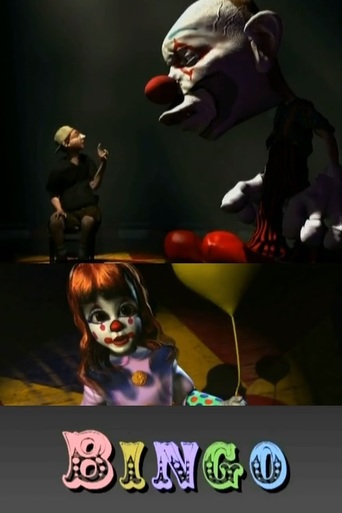Prozzy
"Bingo" is the latest entry in the arena of increasingly complex and lifelike computer-generated animations. Chris Landreth sought a subject for a short that would aid in the development of Maya, an animation software package by Alias/Wavefront. He found inspiration in the Chicago-based theater group "The Neo-Futurists" who for years have performed an ever-changing series of 30 plays in 60 minutes called "Too Much Light Makes The Baby Go Blind." Greg Kotis's play "Disregard This Play," in which a man is psychologically brutalized into believing he is a clown named Bingo, became the basis for Landreth's animation.Bingo expands on the original short skit (a filmed portion of which we see at the beginning) by allowing the innate surrealism of the psychological battering to take on realistic imagery. The bizarre nature of the admittedly thin plot will not appeal to everyone. Several people I know simply raised their eyebrows and looked blankly at me when I asked them how they liked it. But all were impressed by the sheer technical prowess of the animation. Facial gestures, human musculature, lighting and shadows, smoke and haze effects are all astoundingly realistic. And Bingo shows why computer animators strive to create incredibly realistic human characters; not to become replacements for human actors, but to give us believable animated characters that can transform into these strange and surrealistic visions.

